If you’re not lucky enough to live in a tropical climate but like to spend time in the water, then a wetsuit is a necessity for many water sports. With the variety of wetsuits available these days, choosing the right one can seem a little daunting at first.
What do you want to use it for?
The type of activity you plan on doing with your wetsuit will influence the type you should be looking at. If you’re a beginner surfer, or a recreational wake boarder for example, one of the more basic models will be completely adequate for your time in the water. But, if you would like to progress to higher levels, an advanced performance wetsuit, with extra warmth, flexibility and durability will help you get that added edge you need to progress.
How cold will the conditions be in which you will use this wetsuit?
This is an important!. Wetsuits are made to insulate and each model is designed around a certain water temperature. The colder the weather and water temperature, the thicker the wetsuit needed. If the conditions are cold, a full-length wetsuit (or steamer) will generally be required.
What budget do you have?
Buying a cheaper model doesn’t mean it won’t insulate you in the water, but it will likely not be as stretchy or as light as a more expensive model. If you are a recreational water goer who will only wear the wetsuit on limited occasions and are price conscious, a base model will undoubtedly keep you warm enough and meet your needs.
Wetsuit Materials
Neoprene
Neoprene is a form of synthetic rubber that is used in virtually all wetsuits to. Not all forms of neoprene are equal, higher-end materials will offer greater flexibility, lower water absorption, and lighter overall weight.
Wetsuit Thicknesses
The thickness of the neoprene in a wetsuit is often the most important indicator as to how warm it will be.
Neoprene material is measured in millimetres. Wetsuits thickness can range from 0.5mm for warm water conditions to 5mm for winter surfing wetsuits and even 7mm+ for dive wetsuits.
The most common thicknesses are 2mm, 3/2mm, 4/3mm, and 5/4mm. A combination of thicknesses refers to different thicknesses in different zones of the wetsuit. 4/3mm is 4mm in the core, and 3mm in the arms and legs. The first number is always the thickness around the core of the wetsuit.
A 3/2mm wetsuit is one of the most common thicknesses used in New Zealand conditions and can cater to a wide range of water temperatures. These suits work anywhere from summer surfing in the deep south to winter surfing in the far north, and are great for waterskiing or wake boarding year-round. A general rule is, if you need a surf hood or gloves to be in the water, then you should probably be wearing a wetsuit thicker than 3/2mm.
In the North Island, a 4/3mm wetsuit will be ample insulation for the winter conditions. If you surf in Kaikoura or Dunedin, a 4/3mm suit should be adequate for the winter months when combined with booties, a hood, and even gloves.
Wetsuit Tech
Flatlock (FL)
Flatlock stitching is the most common form of seam stitching and by far the most durable. If you are looking for a virtually bomb proof wetsuit and value for money then a flatlock suit is a great option. Flatlock stitching works by overlapping the neoprene panels and sewing them together. Its strong and comfortable to wear, but has limited flexibility. The process of flatlock stitching adds tiny holes through the neoprene which in turn allows cold water to enter the suit. For that reason, flatlock stitched wetsuits are not designed for really cold water. However, being relatively cheap to produce you’ll likely find them on base model wetsuits from most wetsuit manufacturers.
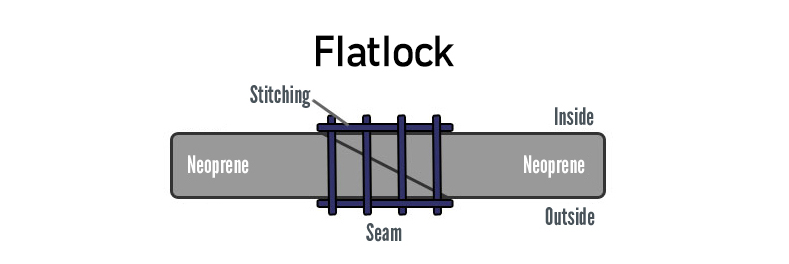
Taped Seams
Internally taped seams have a strong nylon cloth or tape with a waterproof backing applied to the joining seams. It sits overtop of a seam stitch and helps minimise the amount of cold water that enters the wetsuit. The other benefit is the added strength it brings to seams, for improved durability.
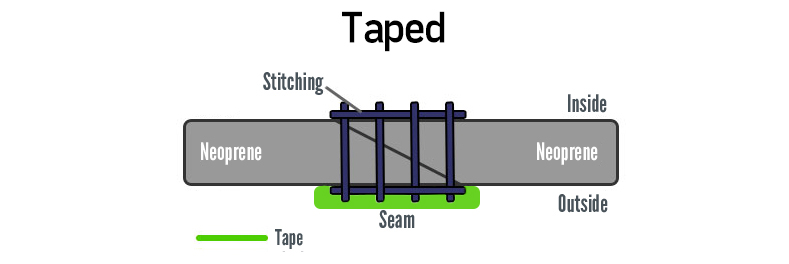
Glued Seams
By gluing the seams it not only blocks off this entry of water but it adds durability to the wetsuit. However, this process doesn’t completely block the tiny holes created in the stitching process and therefore is often combined with various other taping and gluing techniques to completely eliminate water seepage through the seams.
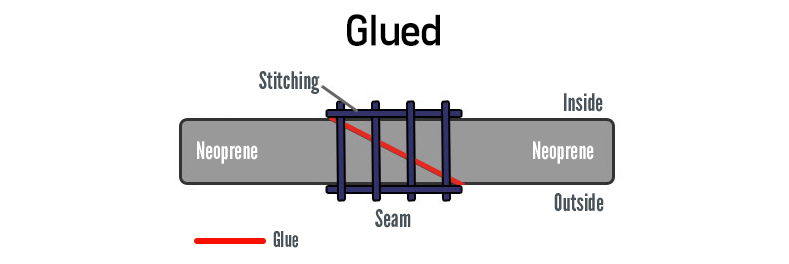
Glued & Blind Stitched (GBS)
The blindstitch seam is aptly named due to the stitching only passing part of the way through the neoprene. Adding glue to blind stitched seams prevents any water from penetrating the wetsuit seam. GBS seams are extremely flexible, suitable for cold water use and are generally found in mid-priced wetsuits.
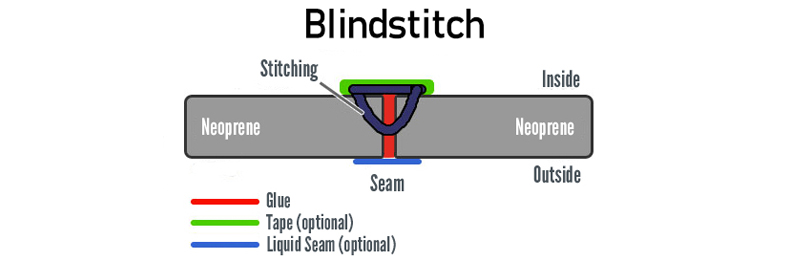
Welded Seams
Seam welding means segments of a wetsuit are fused or bonded together without stitching, generally used in combination with seam glue for added strength and water tightness. It offers extremely good flexibility, outstanding comfort while at the same time preventing any water from penetrating the seams. Its generally limited to the more expensive wetsuits on the market.
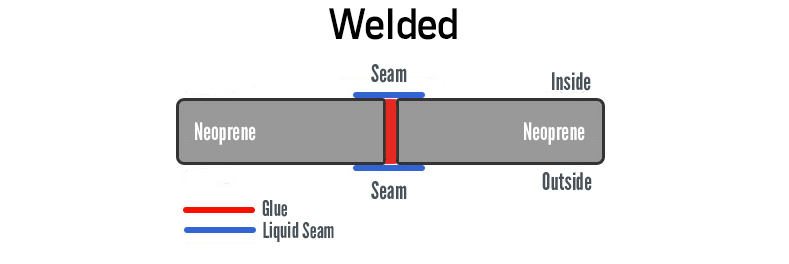
Thermal lining
Today there are various insulating technologies used on the inside of wetsuits to help increase warmth in the water, without compromising flexibility and weight. The majority of wetsuit lining materials are made from a synthetic fabric, normally a nylon and polyester weave. This thermal fabric is then glued into the key regions of the suit to provide additional insulation.
Chest zip vs. back zip wetsuits
Choosing between a chest zip and back zip wetsuit can be a tricky decision. Back zip wetsuits are the most common and a good option for those with previous shoulder injuries. Although a chest zip can be more difficult to enter and exit, they generally hold a more consistent seal around the collar line, making it harder for water to penetrate the neck and flush the suit with cold water.
Some people find the ease of access of a back zip much more beneficial than the reduced flushing in a chest zip, and that’s fine, it can come down to personal preference as the performance difference is relatively minimal.
